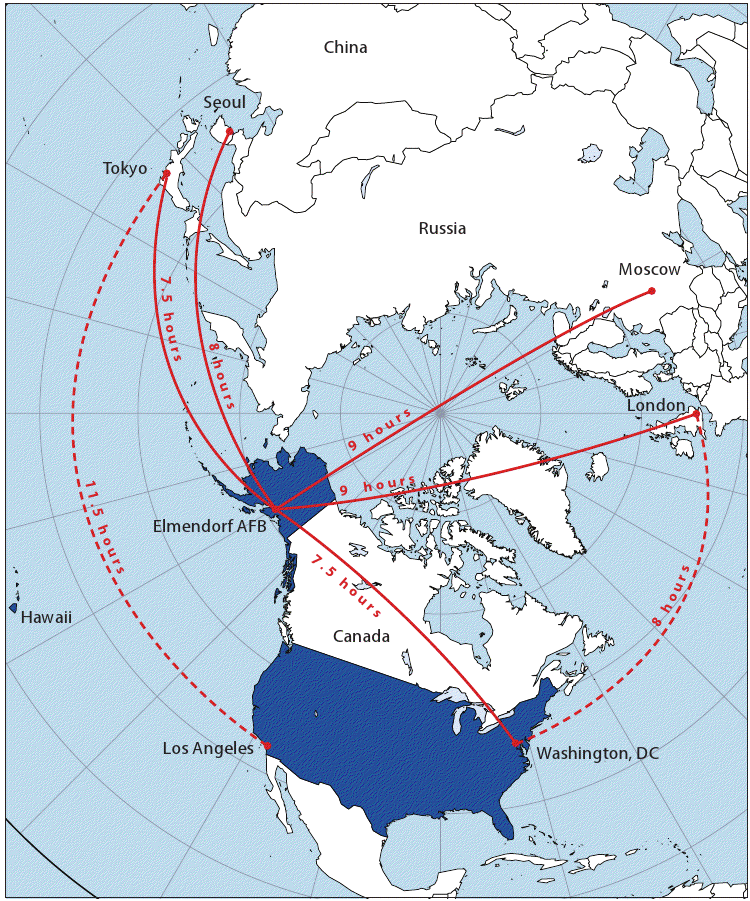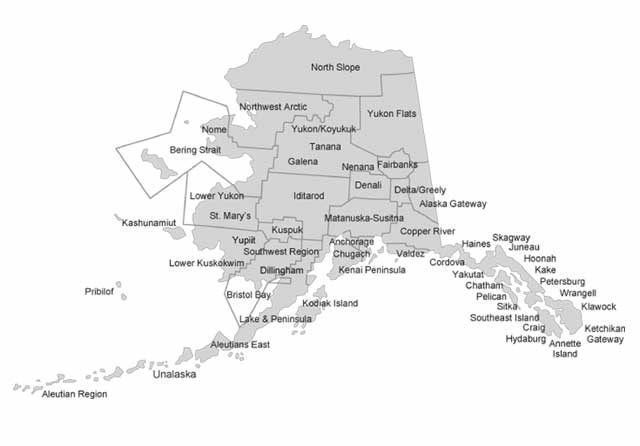Explain -
 Source: http://otcwebdesign.com/case-studies-design-n-print/anilca-map.htm
Essential: Alaska National Interest Lands Conservation Act
1980 has been supported and derided by Alaskans, both in 1980 when it was passed
and today. Describe three impacts of this landmark legislation.
Source: http://otcwebdesign.com/case-studies-design-n-print/anilca-map.htm
Essential: Alaska National Interest Lands Conservation Act
1980 has been supported and derided by Alaskans, both in 1980 when it was passed
and today. Describe three impacts of this landmark legislation.
1. One initial issue with the Alaska National Interest Lands Conservation Act (ANILCA) was the divide between urban and native Alaskans; "Urban Alaska seemed determined to keep Alaska open for development, but village
Alaska wanted protection from development." One of the earliest issues with ANILCA were parallel to those surrounding ANCSA. The land claims and concerns of indigenous Alaskans clashed with those who saw Alaska not as a native homeland but as a resource rich land mass. How best to use Alaska, be it for subsistence or resource extraction, provided much of the initial controversy surrounding the passage of legislation such as ANILCA prior to 1980. The impact of both ANILCA and ANCSA would be one of some animosity between indigenous subsistence and land rights and those who would see Alaska open for development in any area of the state by anyone in the state. A possible current parallel of this would be the Pebble Mine debate.
2. Much like the question between subsistence/indigenous land rights and development, environmentalism and development struggled for who would dominate in the crafting of ANILCA. Many environmental groups such as the Sierra Club and Wilderness Society sought to craft a piece of legislation that would defend lands for future generations. Seeing Alaska as a place to protect pristine land in state and as example for environmental policy nationally, these groups sought to win as large a chunk of land as possible. When Rep. Udall of AZ. proposed 115 million acres be protected under H.R. 39, ANILCA eventually provided for 104 million acres upon passage in 1980. Even though the numbers are large many of the "hands off" demands of the environmental groups were not incorporated into ANILCA. Float planes and snow machines are just some of the holes in total conservation of the wild resources. The argument between environmentalists and developers mirrors that of subsistence user and developers. Today the issue of which is more important, clean, unspoiled air, water and land for future generations or jobs now, still rages.
3. ANILCA (and Alaska in general) is the poster child for a debate on dual versus cooperative federalism. What prevails, the 10th Amendment to the U.S. Constitution or the Supremacy, Commerce and Necessary and Proper clauses of the U.S. Constitution? Who benefits more ~700,000 thousand Alaskans or 308 million Americans? For as much as ANILCA was a fight between indigenous, environmental and development groups it was also a fight between politicians. In the
Modern Alaska: ANILCA reading the story quickly develops between a House Rep. from Arizona named Morris Udall and two Alaska Senators named Stevens and Gravel. Udall seeks to preserve portions of Alaska for all Americans, where Stevens and Gravel seek to defend lands for in state development. This is a give-and-take not at all uncommon in American politics and usually develops not from ideological purity but more from political practicality. Many in Congress feel very magnanimous when dealing with another state's land while becoming their own state's greatest champion when someone tries to return the favor in kind. The same works for pork spending; federal dollars to your state is money well spent while to another seems simply a waste. Again, there may be a parallel in the ANILCA discussion, post-passage, in the development of ANWAR.
 Source:https://www.institutenorth.org/programs/alaska-commons/anilca-seminars
Examine: Identify the Alaska Native regional corporation in
the area of Alaska where you live. Examine its website and describe its mission
and its current business ventures.
Source:https://www.institutenorth.org/programs/alaska-commons/anilca-seminars
Examine: Identify the Alaska Native regional corporation in
the area of Alaska where you live. Examine its website and describe its mission
and its current business ventures.
 Source: http://www.ciri.com/
For the Anchorage/Cook Inlet the regional corporation is CIRI.
Source: http://www.ciri.com/
For the Anchorage/Cook Inlet the regional corporation is CIRI.
- The mission of this native corporation is:
- "The mission of CIRI is to promote the economic and social well-being and Alaska Native heritage of our shareholders, now and into the future, through prudent stewardship of the company's resources, while furthering self-sufficiency among CIRI shareholders and their families."
- This mission statement is somewhat different than most businesses. Most businesses claim responsibility for shareholder growth and resource management but would mean it solely for the sake of increasing profit margins. This mission statement goes beyond being a simple "for profit" motto and comments on the heart of what ANCSA set out to do which is the growth and protection of a people as a resource, not simply resource acquisition.
- The main projects for CIRI are:
- Cook Inlet Oil and Gas
- Natural gas development and power generation
- Fire Island Wind
- Wind turbine power development
- Tikahtnu Commons
- Commercial/Retail development in Anchorage (Muldoon)
- Underground Coal Gasification
- Coal converted into synthesis gas
Evaluate -
This module highlights the diversity of interests in Alaska. James Madison in the Federalist Papers 10 and 51 seeks to find a way to defend the the Constitution and finds his answer in a large republic full of factions. This is exactly what Alaska has! This massive land mass of few people but plenty of opinions is the perfect place to see how a robust discussion of republican and federalist virtues plays out in real politic. This unit highlights all the high points of current political fights today; state rights versus federal regulation and which is best for America's future. ANCSA and ANILCA capture this perfectly. Also, Many Alaskans may not realize that their PFD is part of a larger global debate on the role of states and capitalism. Countries such as Saudi Arabia, Brazil, India and the United Arab Emerates also have their version of PFDs. These nations are using their PFDs in much the same way as Alaska and also to help fuel the coffers of state sponsored industries. I read a book on this a couple summers back that I will plug now to hopefully add to the discussion had in this module. This module provides great classroom insight for students in understanding who actual politics plays out once the standard building blocks have been memorized (435 House reps, 100 senators...).

Don't let the title fool you, the book is in defense of innovative capitalism.
Site Seeing:











